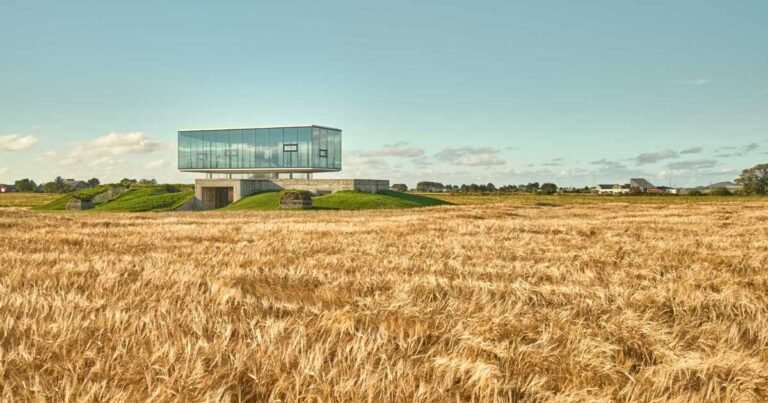Neri&Hu extends the Qujiang Museum of Fine Arts with a red travertine facade
Architect: Neri&Hu
Location: Xi’an, China
Completion Date: December 2021
Neri&Hu’s extension to the Qujiang Museum of Fine Arts weaves contemporary design into a historic site, an act which reinterprets the standard of cultural monuments in Xi’an, China. Located south of the city’s Giant Wild Goose Pagoda, built in the 7th century, the project is a gateway of sorts for Xi’an’s Datang Everbright City, a pedestrian mall which connects commercial and entertainment spaces to historic sites.
The client, Yungao Hotels (Group) Xi’an, sought out a “new architectural icon” at the museum’s East Entry, Neri&Hu told AN. In response to this, Neri&Hu said that it wanted to create “an anchor and a durable symbol of social history for the surrounding urban fabric,” in addition to simply fulfilling the project’s programmatic requests. The East Entry’s prior design “was a landscape with big strides,” the firm explained, that connected to the museum’s B2 level. The design team sought to preserve some of this in order to retain a straightforward pedestrian entry to the museum.
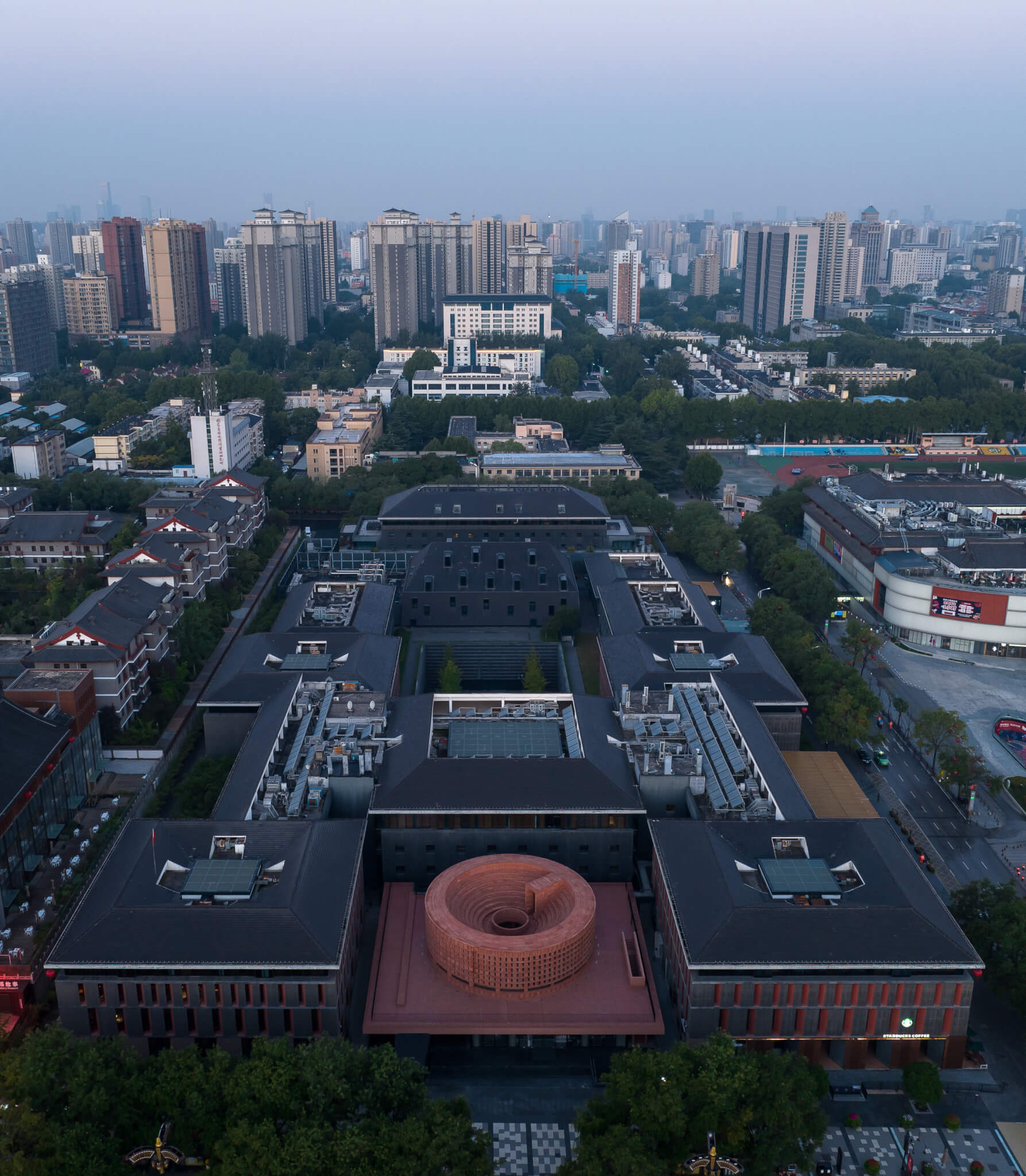
The design team approached the existing site with careful considerations to massing, as it was surrounded primarily by gallery spaces. With this in mind, the design team conceived four components of the project: a Base, Sculptural Walk, Platform, and Monument. The base of the building was constructed with cast-in-place concrete, and was partially sunken from the level of the site’s existing plaza. Neri&Hu was able to retain the original steps, and added escalators into the base, “concealed within a sculptural form.” This created a tiered layout of the concrete base, with steps connecting down to a sunken piazza, which features a triple-height light well. This base layout connected the existing museum and restaurants with new restrooms and retail spaces.
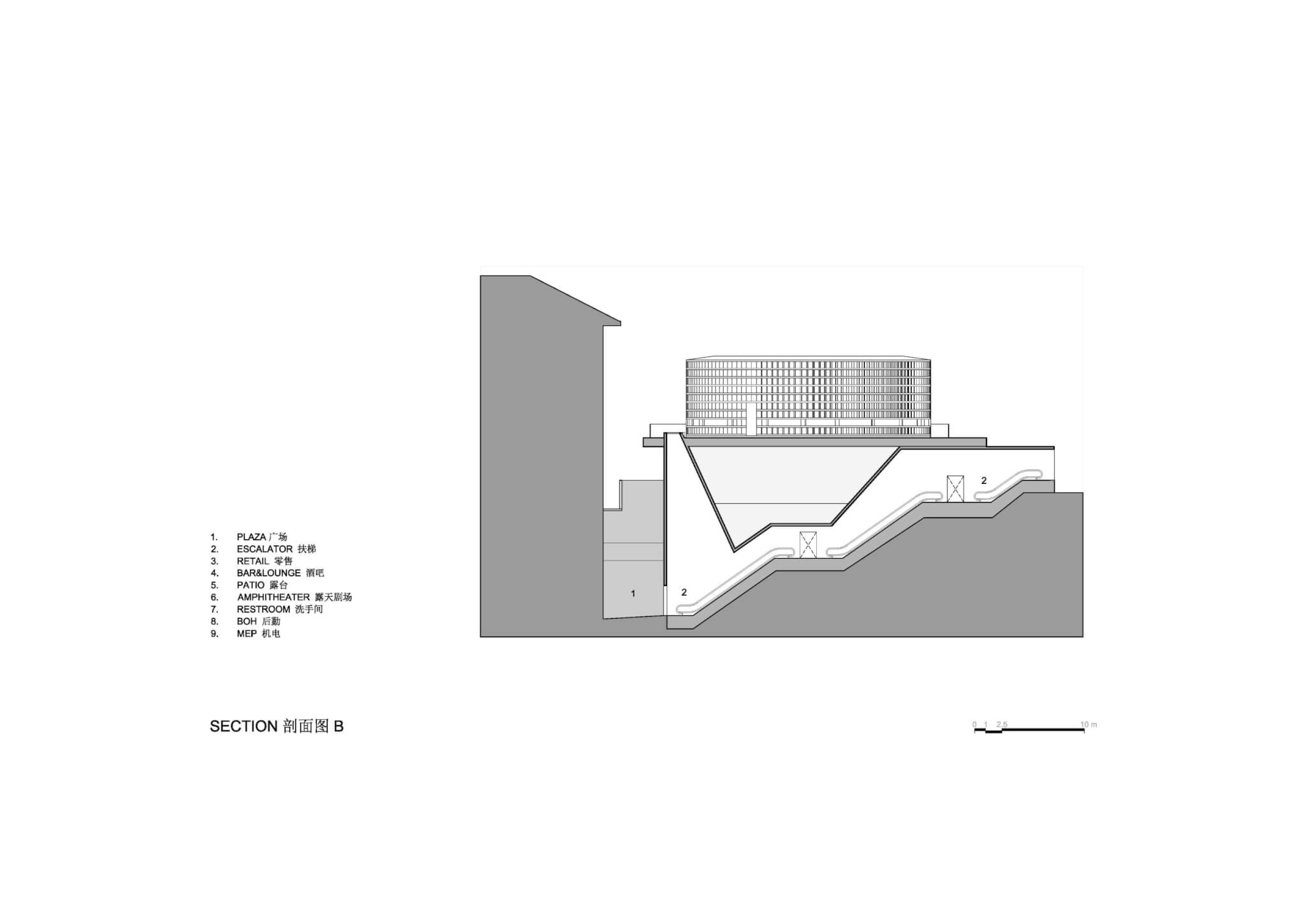
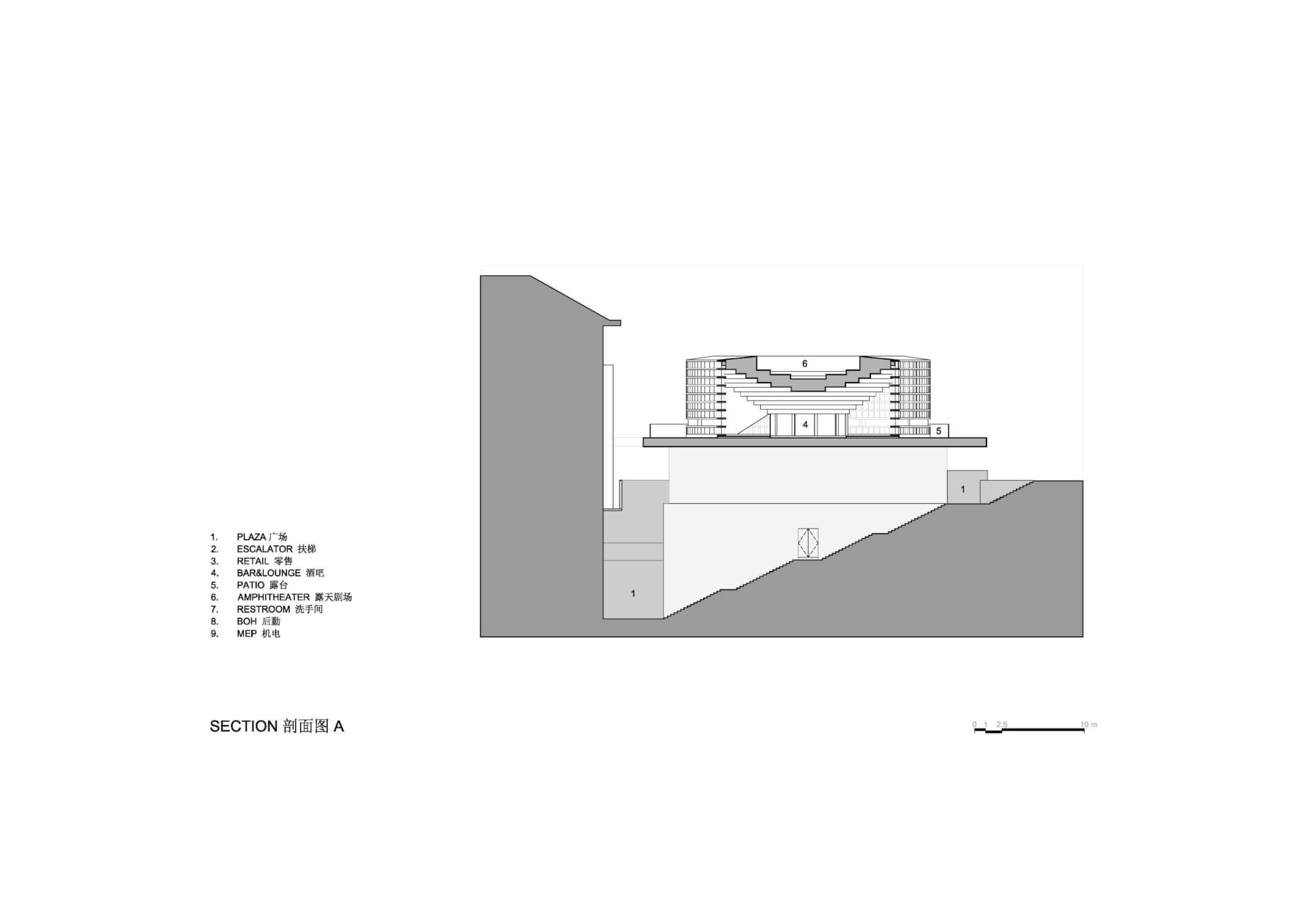
The platform was constructed above the base with a post and lintel system of stone columns and glass curtain walls, “supporting a floating roof house retail spaces,” Neri&Hu described. The retail level was designed with a curtain wall in order to visually separate it from the base and upper levels.
The platform was capped with the monument—an elevation of red travertine masonry units that house indoor lounges and an outdoor amphitheater. The diamond-shaped masonry units were arranged with intervals that “accentuate the transmissivity of light,” forming the facade of the second story. Neri&Hu finalized the diamond-shaped units in order to design a facade that would “become alive with layers of sensibility.” The modular travertine units installed on the facade filter natural light, moderating the experience for occupants in the amphitheater.
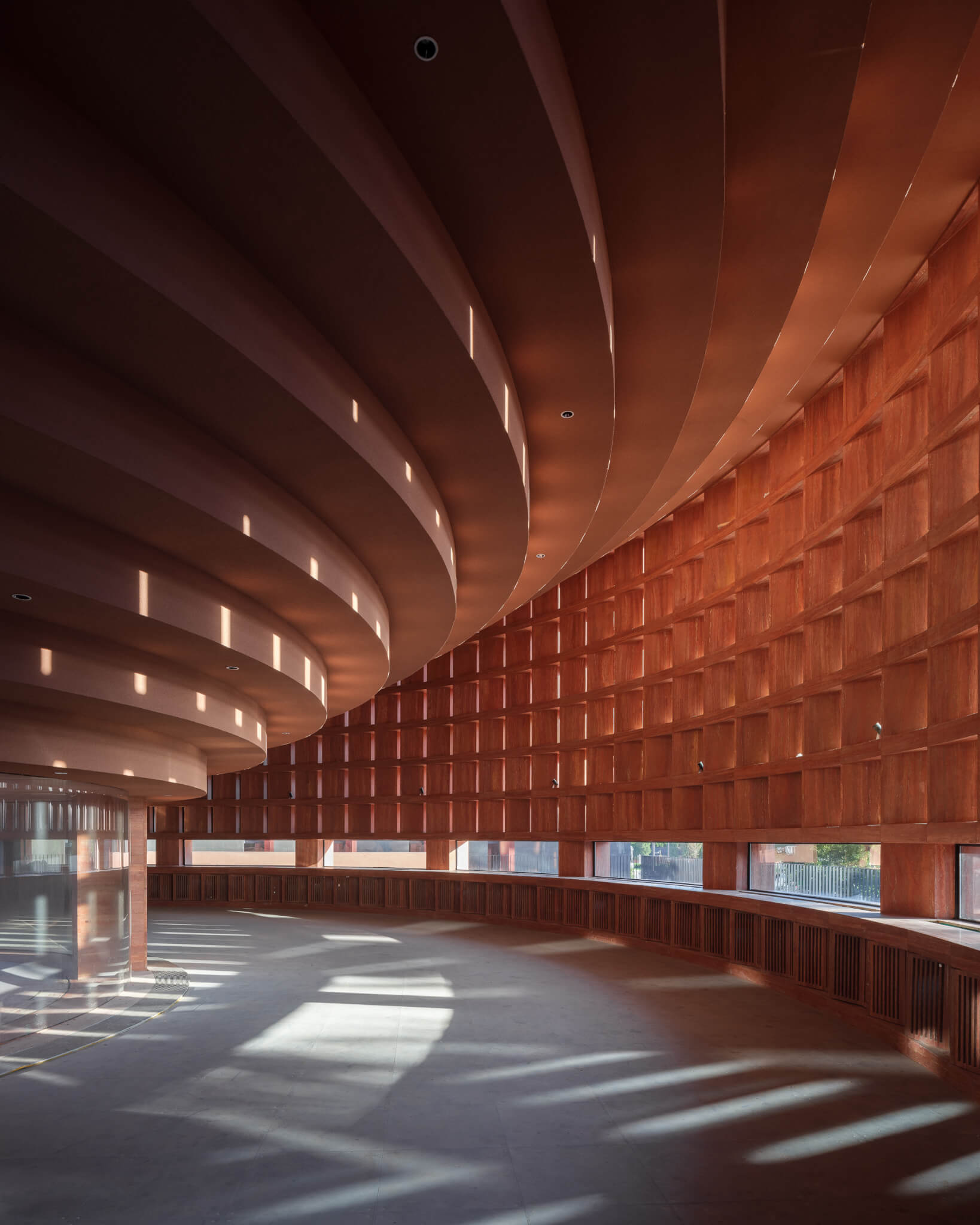
A passage on the northwest side of the existing museum building connects to the amphitheater and the lounge’s dining and entertainment spaces. Thus, this second story terrace fulfills the programmatic needs of the expansion while establishing an additional spatial connection to the existing museum building. The sculptural walk is encased by the travertine facade above the base, connecting to the amphitheater above.
Due to the constraints of the site, which allowed minimal room for which the construction team to work, and the quantity of stone, the construction process was lengthy. Neri&Hu worked closely with the installation team, but was unable to visit the site due to COVID restrictions.

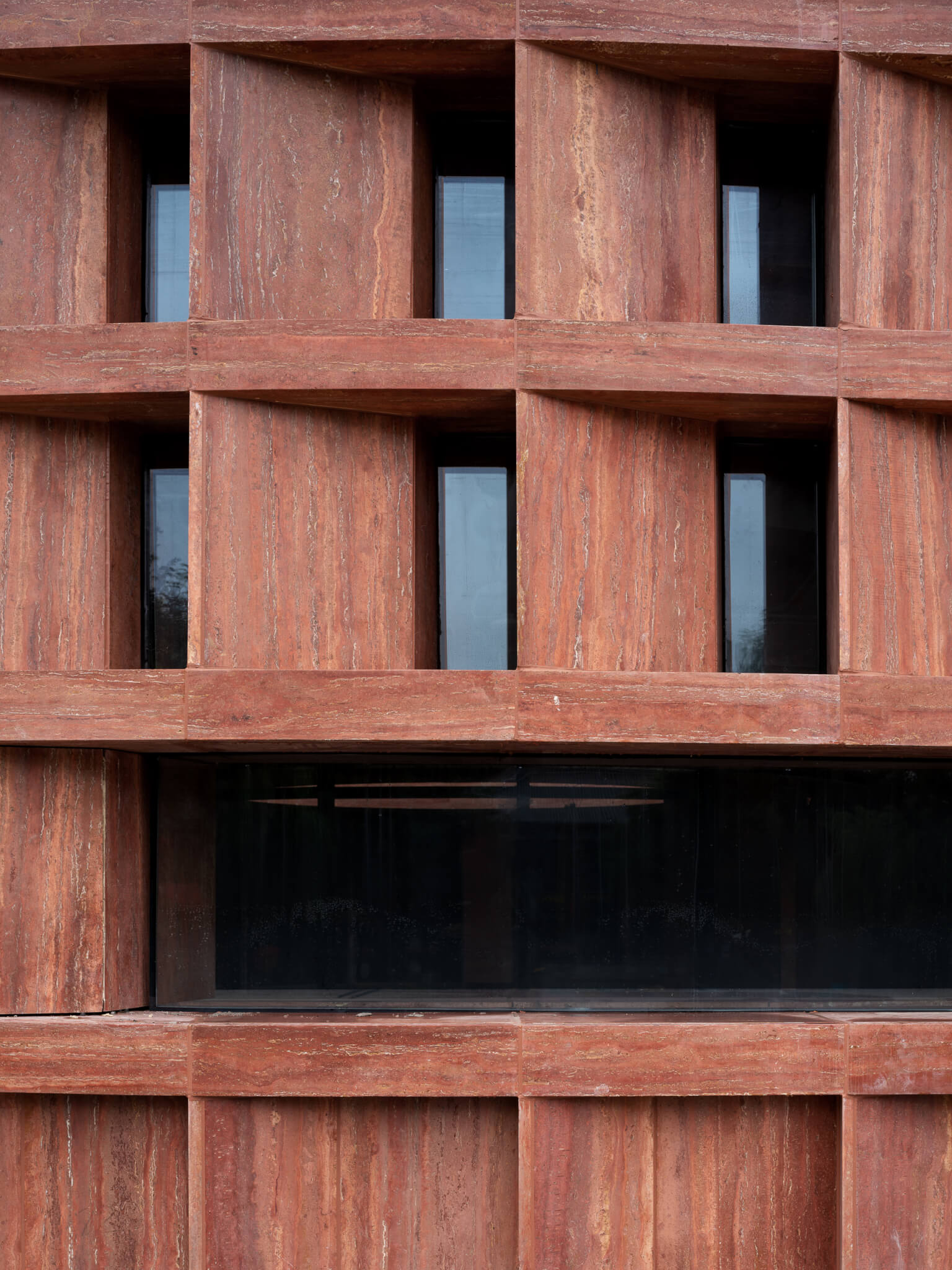
Neri&Hu told AN that the design team considered green stone in place of the travertine, but found that the red color specified in the travertine better matched the site’s existing surroundings. They felt that the red delivered “a sense of richness,” and complemented the red accents on the existing museum facade and Datang Everbright City.
Given the choice of natural stone for the facade, Neri&Hu took a careful approach to the the project’s scheduling in an installation process they described as “challenging.” Each row and column of stone was numbered, and adjustments to the system were made in advance, as the team was wary of “obvious chromatic aberration” using a natural stone. The travertine was installed by dry-hanging, with a blackened steel structure on the interior.
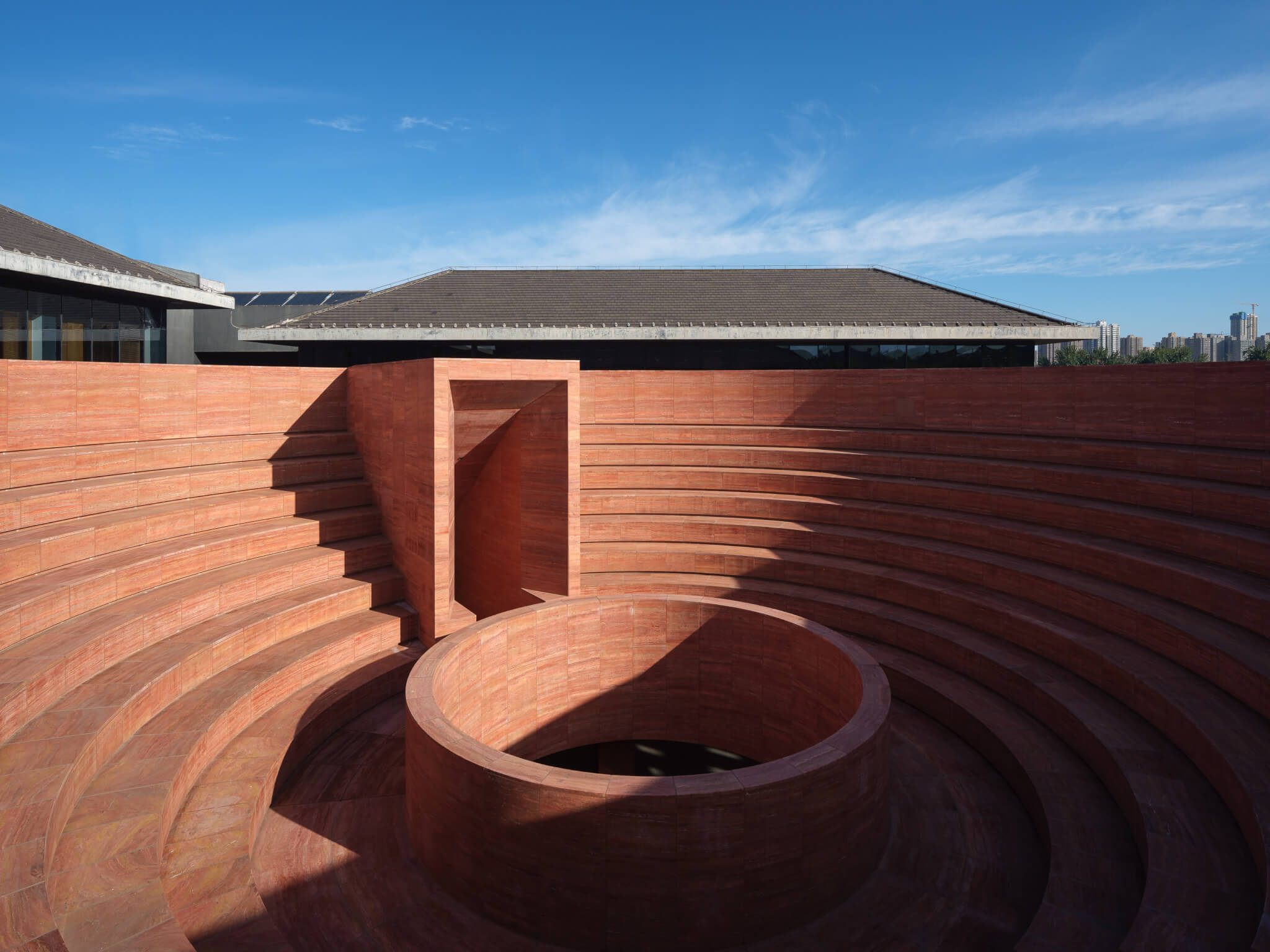
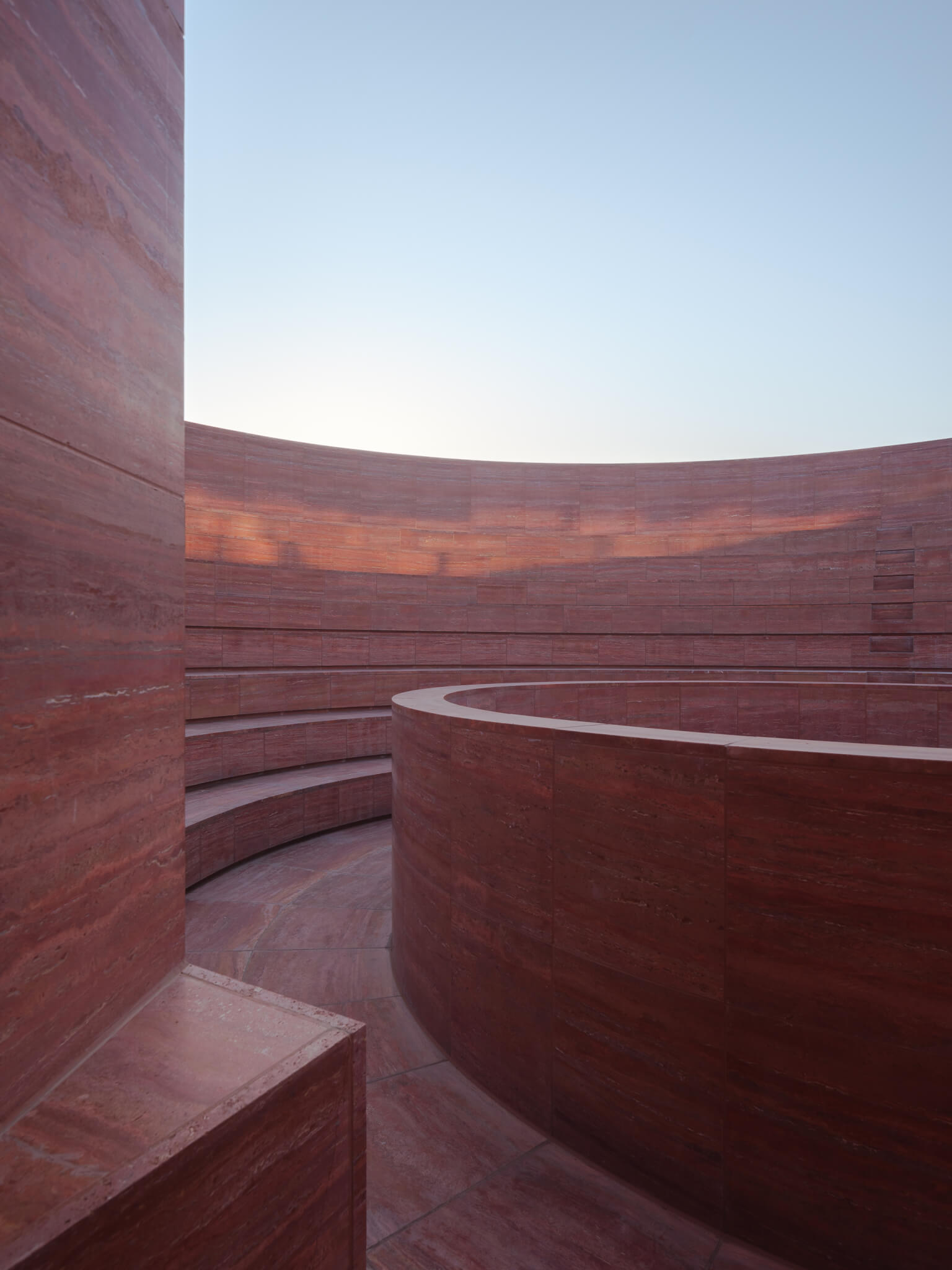
The natural colors of the travertine shape the second story facade, with the diamond masonry units on the outside smoothing out on the amphitheater. With the floors, seating, and walls of the amphitheater constructed with travertine, save the glazing of the sculptural walk and occasional metal door, the result is an immersive amount of travertine that creates a facade that goes beyond the simple street-facing wall. With the platform level curtain wall connecting to the street level, the travertine facade shines without material distraction from the levels below.




